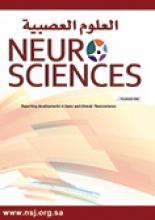Abstract
OBJECTIVE: To describe the etiological characteristics of intellectual disability in one Iranian center.
METHODS: In a cross-sectional study, 64 cases with mental retardation (MR) were examined in the Intellectual Rehabilitation & Welfare Care Center of Vardavard, Iran between April and September 2008. Cases were diagnosed with MR or showed delay/regression of developmental milestones. We studied the records of patients and interviewed their families.
RESULTS: A total of 64 cases were screened (most were children). The number of male patients was 19 (29.7%) and the females was 45 (70.3%). First degree relatives with mental retardation were found in the families of studied patients, among these relatives 48% were female and 52% were male. Up to 77% of the marriages were between relatives, approximately half between first cousins. The illiteracy rate reached 34% in the families of MR children. Hard labor, hypoxia during labor, mother’s preexisting systemic disease, and maternal and neonatal infection were the most important factors for MR. Furthermore, most of the families were found to have low socioeconomic class.
CONCLUSION: Cognitive disabilities in children are multifactorial. Consanguinity was the main risk factor for MR and considering its high rate in our country due to traditional marriages, it should be modified.
- Copyright: © Neurosciences
Neurosciences is an Open Access journal and articles published are distributed under the terms of the Creative Commons Attribution-NonCommercial License (CC BY-NC). Readers may copy, distribute, and display the work for non-commercial purposes with the proper citation of the original work.






